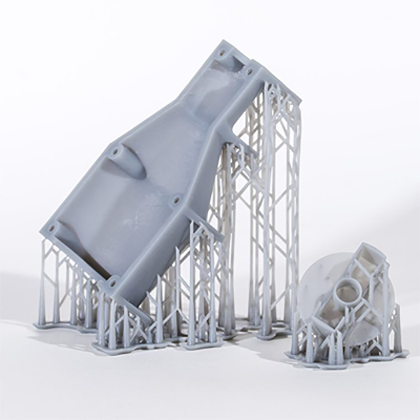Unlock the Secrets to Transforming Your Ideas into Reality with SLA Prototyping!
In today's fast-paced world, turning innovative ideas into tangible products is more critical than ever. SLA (Stereolithography Apparatus) prototyping has emerged as a pivotal technology that bridges the gap between concept and reality. The significance of SLA prototyping lies in its ability to create precise, high-quality prototypes quickly, enabling designers and manufacturers to test and refine their products efficiently. With the increasing demand for rapid prototyping across various industries—from consumer electronics to automotive—SLA is becoming an indispensable tool for fostering innovation and speeding up product development. As someone who has witnessed friends navigate the prototyping process, I can attest to how SLA has empowered them to bring their creative visions to life, highlighting the transformative power of this technology.

Understanding SLA Prototyping
SLA, or Stereolithography Apparatus, is a 3D printing technology that uses a laser to cure liquid resin into solid plastic. The process begins with a digital 3D model created in CAD software, which is then sliced into thin layers. A laser beam traces the first layer onto a vat of photosensitive resin, hardening it into a solid. The build platform then lowers, and the next layer is formed—this process continues until the prototype is complete. One of the standout advantages of SLA over other prototyping methods, such as FDM (Fused Deposition Modeling), is its ability to produce highly detailed and accurate models with smooth finishes. This level of precision is particularly beneficial for complex designs, intricate geometries, and functional prototypes, making SLA a preferred choice for many industries.
Benefits of Using SLA Prototype Services
Hiring SLA prototyping services offers several advantages that can significantly impact product development. Firstly, the speed of SLA technology allows for rapid turnaround times, enabling businesses to bring products to market quicker than traditional methods. Secondly, the accuracy of SLA prototypes ensures that designs are validated before mass production, reducing the risk of costly errors and revisions. Additionally, SLA's design flexibility allows for the creation of complex shapes and structures that may be challenging to achieve with other techniques. These benefits translate into cost-effective solutions for businesses, allowing them to allocate resources more efficiently while maintaining high-quality standards. For instance, a friend of mine in the automotive industry was able to significantly reduce their prototype development time and improve design accuracy by utilizing SLA services, resulting in faster product launches.
Choosing the Right SLA Prototyping Service
When selecting an SLA prototyping service, there are several key factors to consider to ensure you make the right choice. Experience is paramount; look for a service provider with a solid track record in your industry. The technology used is also crucial; ensure that they employ the latest SLA equipment and materials for optimal results. Customer service can make a significant difference in the overall experience, so choose a provider that is responsive and willing to collaborate with you throughout the process. Additionally, turnaround time is essential—some projects may require quicker delivery than others. Lastly, reviewing portfolios and client testimonials can provide insight into the quality of their work and customer satisfaction. A friend who recently worked with an SLA service emphasized the importance of this step, as it helped them find a reliable partner who understood their specific needs.
Common Applications of SLA Prototyping
SLA prototyping is utilized across a variety of industries, each reaping the benefits of this advanced technology. In the automotive sector, for instance, SLA prototypes are often used for creating functional parts and test components, allowing engineers to assess fit and performance before full-scale production. The aerospace industry also leverages SLA for producing lightweight, complex components that meet stringent safety standards. In the realm of consumer products, companies frequently rely on SLA to develop prototypes for everything from electronics to household items, enabling rapid iteration of designs based on user feedback. Lastly, the medical device industry utilizes SLA prototyping to create custom implants and surgical tools, which can be tailored precisely to patient needs. These applications showcase the versatility and efficiency of SLA in driving innovation and enhancing product development.
Embracing the Power of SLA Prototyping
In summary, SLA prototyping is a powerful tool for transforming ideas into reality, offering unmatched speed, accuracy, and design flexibility. As industries continue to evolve, the value of SLA prototyping services becomes increasingly evident, enabling businesses to innovate and reduce time-to-market. Whether you are an entrepreneur with a groundbreaking concept or a seasoned manufacturer looking to refine your product line, considering SLA services for your prototyping needs can unlock new pathways for creativity and success. As we've seen, the transformative potential of SLA technology is not just theoretical; it has real-world implications that can propel your projects forward. Embrace the possibilities that SLA prototyping brings and take the first step toward bringing your ideas to life.








